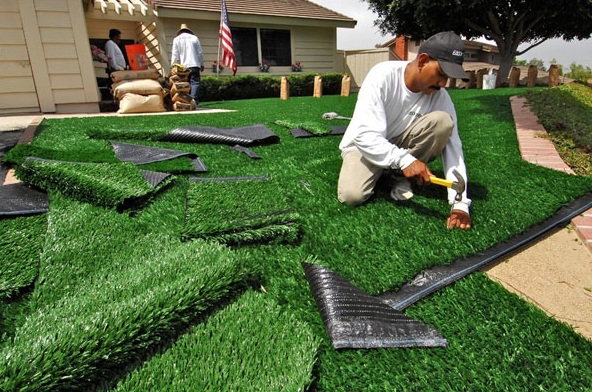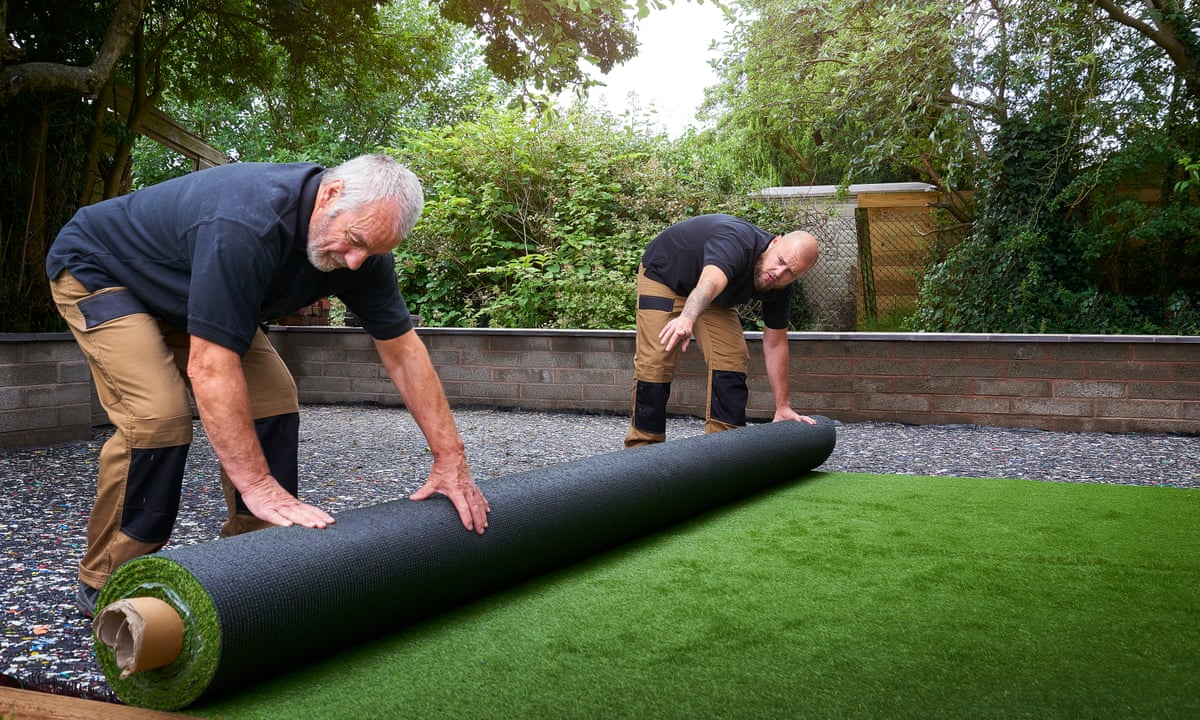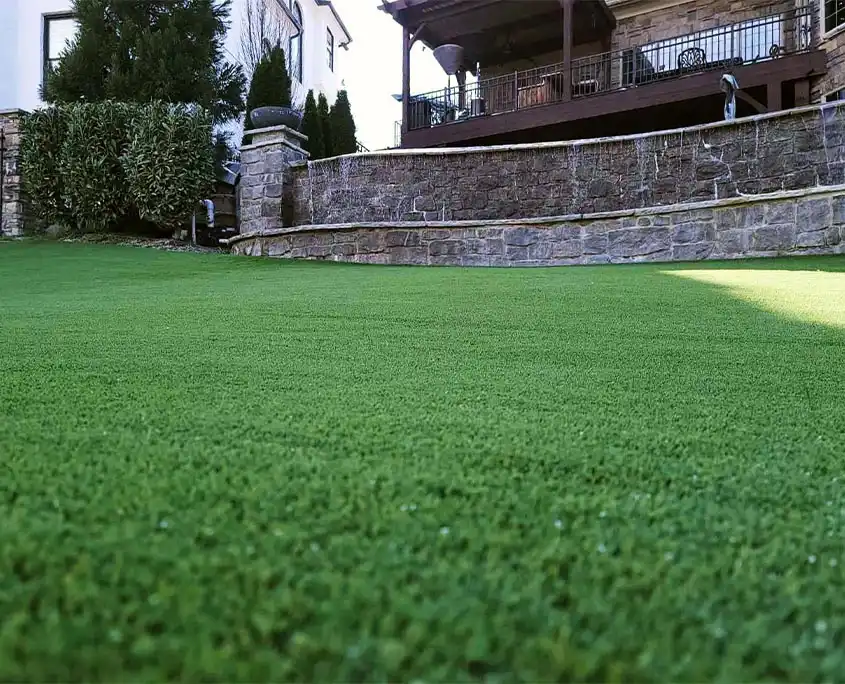Look Into the Environmental Advantages of Opting for Artificial Grass Solutions
The adoption of synthetic grass solutions offers a compelling chance to attend to pushing environmental challenges. By considerably decreasing water usage and minimizing the application of dangerous chemicals, these choices not only advertise lasting landscaping but also protect local ecosystems. In addition, the reduced carbon impact connected with decreased maintenance activities adds to an extra sustainable method to land management. Nonetheless, the implications of these benefits extend beyond simple conservation initiatives, increasing concerns concerning their long-lasting effect on habitat preservation and total ecological balance. Exploring these measurements reveals a complicated interplay worth considering.
Water Preservation Conveniences
One of the most substantial advantages of artificial turf is its capability to preserve water. In comparison, synthetic turf does not need watering, substantially lowering the overall demand for water sources.
By getting rid of the need for regular watering, man-made turf adds to lasting landscape techniques and helps alleviate the ecological influence of extreme water consumption. Additionally, the preservation of water encompasses the reduction of drainage, which can cause dirt erosion and river contamination.
In addition, the installation of synthetic grass enables districts and homeowners to allocate water resources much more successfully, focusing on important uses such as alcohol consumption water and farming. The change in the direction of synthetic grass not just advertises responsible water usage but also lines up with wider ecological goals focused on protecting all-natural sources.
As neighborhoods increasingly prioritize sustainability, the water preservation advantages of fabricated lawn provide an engaging case for its adoption in commercial and domestic landscape design jobs.
Minimized Chemical Usage
The transition to synthetic grass considerably lowers the dependence on chemical treatments commonly used in natural yard maintenance. Traditional lawn administration usually involves the application of fertilizers, chemicals, and herbicides to advertise growth and control insects. These chemicals can present risks to human wellness, neighborhood wildlife, and the atmosphere, adding to soil and water contamination.
On the other hand, synthetic grass eliminates the demand for these unsafe compounds. Once installed, it calls for marginal upkeep, primarily containing normal cleansing and irregular infill replenishment. This decrease in chemical usage not just benefits the prompt setting yet also adds to more comprehensive environmental stability. By decreasing the launch of artificial substances right into the ecosystem, synthetic grass promotes healthier dirt and water supply.
Additionally, the absence of chemical drainage related to synthetic grass installments assists shield neighborhood waterways from pollution, supporting aquatic life and preserving biodiversity. Turf installation phoenix az. As neighborhoods significantly prioritize lasting practices, going with synthetic grass provides a viable option that aligns with ecological preservation objectives. Through this shift, homeowner can take pleasure in lavish environment-friendly rooms without jeopardizing ecological health and wellness, paving the means for an extra sustainable future
Lower Carbon Footprint

Additionally, the setup of man-made turf can cause significant water conservation. All-natural lawns call for considerable amounts of water for irrigation, which not just includes to the carbon impact associated with water extraction and treatment however likewise stress regional water resources. In comparison, synthetic grass needs marginal upkeep, needing no watering, therefore considerably decreasing water usage and its linked energy prices.
Furthermore, the long life of synthetic grass adds to its lower carbon influence. With a life-span of approximately 15 years or more, the need for constant replacements is diminished, resulting in much less waste and reduced power intake in manufacturing and disposing of standard turf choices. Overall, synthetic turf presents a sustainable alternative for eco mindful landscape design.
Habitat Preservation
Environment preservation is an important consideration in the dispute over landscaping options, specifically when comparing synthetic grass to all-natural yard. Natural lawn lawns commonly require considerable maintenance, consisting of the usage of herbicides, plant foods, and chemicals, which can detrimentally affect regional ecosystems. These chemicals can leach into the soil and rivers, hurting indigenous flora and fauna and disrupting local environments.
On the other hand, synthetic grass Read More Here provides a possibility to minimize the environmental footprint of landscaping. By opting for artificial turf, homeowners can decrease the disturbance of natural habitats related to typical yard treatment methods. Artificial turf removes the demand for harmful chemicals, thus protecting neighboring wild animals and maintaining the stability of bordering ecological communities. In addition, the installment of artificial turf can result in the conversion of previous turf areas hop over to here into even more biodiverse landscapes, such as pollinator gardens or indigenous plant locations, which can sustain regional wild animals.
Eventually, the transition to synthetic grass not just preserves water and reduces upkeep initiatives but also fosters a more unified partnership in between human tasks and the natural surroundings, promoting environment preservation at the same time.
Long-Term Sustainability
Long-term sustainability is an important consider examining the benefits of synthetic grass over typical grass lawns. One of the most significant advantages of artificial lawn is its resilience; it can last as much as 15-20 years with marginal maintenance, whereas natural lawn calls for frequent reseeding and replacement. This long life lowers the requirement for continuous sources, such as water, fertilizers, and chemicals, which are vital for maintaining a healthy grass lawn.
Additionally, synthetic grass contributes to a decrease in carbon discharges related to grass treatment devices. Typical grass often need gas-powered lawn mowers, trimmers, and blowers, all of which add to air pollution. Arizona artificial turf. In contrast, synthetic grass eliminates the need for such tools, promoting discover this a cleaner atmosphere
Moreover, the production of man-made grass significantly uses recycled products, boosting its sustainability profile. As manufacturers embrace eco-friendly methods, the ecological footprint of synthetic grass proceeds to lessen.

Conclusion
The adoption of synthetic grass solutions presents considerable ecological advantages, consisting of considerable water conservation, reduced dependence on dangerous chemicals, and a reduced carbon footprint. Fabricated grass help in preserving all-natural habitats by minimizing land disruption and advertising long-term sustainability with the usage of sturdy materials. Jointly, these factors highlight the possibility of artificial lawn to contribute positively to ecological wellness and offer a sensible choice to conventional landscaping practices in a significantly resource-conscious world.
In comparison, fabricated turf does not need watering, dramatically lowering the overall demand for water resources. By decreasing the launch of synthetic substances right into the ecosystem, synthetic grass advertises healthier soil and water systems.
Moreover, the setup of fabricated lawn can result in substantial water preservation. In comparison, artificial turf needs minimal maintenance, needing no watering, therefore significantly reducing water usage and its associated power prices.
